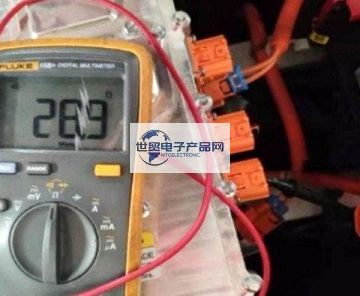Categorization:Product Information
Wiring harness inspection is a series of test and inspection steps to verify the quality and function of wiring harness in the manufacturing process of electronic wiring harness. The purpose of harness inspection is to ensure that the electrical connection of the harness is good, there is no short circuit or open circuit, and it meets the requirements of relevant standards and specifications. The following are the main aspects of wire harness detection and the corresponding methods. Electrical Connectivity Test: This is the core part of the harness inspection to verify that the wires in the harness are properly connected. Common test methods include: Resistance test: Determine whether the wires are connected properly by measuring the resistance value in the harness. An abnormal resistance value may indicate an open circuit, a short circuit, or a poor contact. Short circuit test: Detect whether there is a short circuit by applying voltage and measuring the current in the harness. A short circuit may cause abnormal current flow, equipment failure, or safety issues. Insulation Test: Verify that the insulation is acceptable by applying high voltage and measuring the insulation resistance in the harness. Good insulation prevents electrical leakage and interference. Functional testing: The harness also needs to be functionally tested to ensure that the individual components and systems are functioning properly. Common functional tests include: Signal transmission test: test whether the signal transmitted by the harness is accurate, stable and consistent with the design requirements through analog or actual input signals. Power supply test: test whether the power supply circuit in the harness can provide sufficient voltage and current to various devices and components. Control logic test: test whether the control signal in the harness can correctly trigger the operation of relevant equipment and systems. Environmental adaptability test: test the working ability of the harness under different environmental conditions, such as temperature, humidity, vibration, etc. Physical inspection: In addition to electrical and functional testing, the harness requires a physical inspection to ensure structural integrity and compliance. Common physical inspections include: Visual inspection: check whether the harness is damaged, cut or deformed, such as wear, broken wire, discoloration, etc. Fixation check: check whether the harness is fixed firmly, such as using straps, clamps, fixing clips, etc. Identification check: check whether the identification, number and color on the harness conform to the standards and specifications, so as to facilitate installation and maintenance. Automated testing: To improve the efficiency and consistency of wire harness inspection, many manufacturers use automated testing methods. Automated testing can use specialized test equipment and tools, such as test fixtures, multi-functional test instruments and so on. These devices allow rapid electrical testing, functional testing, and physical inspection, and provide automatic logging and reporting. Technical Documentation and Standards Compliance: Harness manufacturers typically comply with specific technical documentation and standards, such as design specifications, process flows, and quality requirements. Harness inspection needs to be consistent with these documents and standards to ensure the quality and reliability of the harness. Wiring harness inspection is usually carried out at various stages of wiring harness manufacturing, including raw material procurement, wiring harness assembly, finished product testing, etc. Each stage has corresponding test requirements and methods. Wiring harnesses produced on a large scale are usually tested by a combination of statistical sampling and comprehensive inspection to ensure the quality of the entire batch. Wiring harness inspection involves electrical connectivity testing, functional testing, physical inspection, automated testing, and adherence to technical documentation and standards. Through these tests and inspections, we can ensure the quality and reliability of the wiring harness, meet the requirements of relevant standards and specifications, and ensure the normal operation and safety performance of the wiring harness in applications such as electric vehicles.
---------------------------------------------------------------------------------------------------
About the World Trade Electronic Products Network Platform related brief introduction and sales product brief introduction: World Trade Electronic Products Network-professional agent/production/sales of various { connector | wiring harness | cable products }; If you have relevant [connector | harness | cable products] procurement/purchase needs or want to buy/know what connector | harness | cable products solutions we can provide, please contact our business personnel below; if you have relevant [connector | harness | cable products] sales/resources and promotion needs, please click "Business Cooperation ←" to negotiate with the specialist!